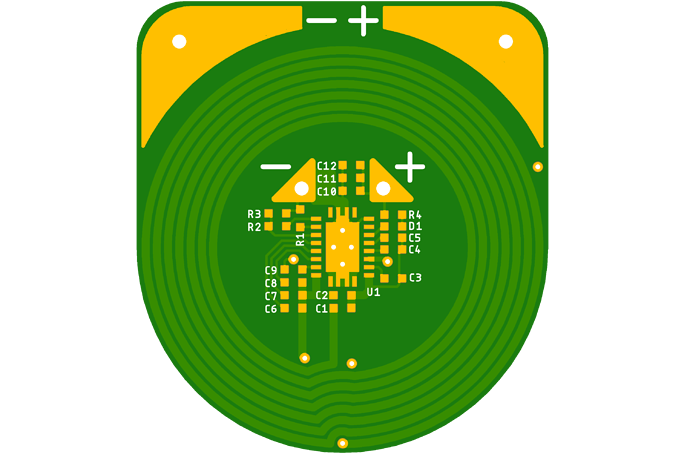Maybe next test, you can slice open a piece of chicken, Insert the module, and see how long it takes to cook dinner ![]()
I’d definitely buy one to play with.
Me too.
If so, wonder where at? Dont see it on a talk when I was poking through the list, or biohacking village site.
The defcon talk was Miana (@NiamhAstra ) and the post on Facebook was chimpo mcdoodle from the discord
and on occasion @Chimpofm on the Forum
First implant using the Qi charger. I’m meeting up with Miana tomorrow. She’s going to add glow powder, then get it encapsulated and put in.
I’m sure it’s very premature to ask, but where/when/how can I get one? Also how will installs be handled for these?
What kind of glow powder is she going to use?
Yeah definitely premature. I’ll get back to you. This was a collaboration between Miana and I for her personal use. It may literally not be safe, so after having it in for awhile she’ll determine if she’s even willing to offer it to others.
On my end, the black Qi receiver board will be made open source now that it’s finalized, and in about 2 months I should be finished with a large population run of them on my pick and place and can begin selling them to anyone who wants to use them for their own implant projects. I know the grindfest people were very interested for some of the whacky ideas they had, so there will be more interesting stuff coming up in this space over the next few months
Also premature, but what did you settle on for expected & functional power budgets? 500ma @5v implanted what you’re assuming for your work? Or did final resistors & losses from skin knock it down significantly?
She said this
It depends on how good you can get the coupling, because the Qi chargers are always bigger than this receiver. Under good coupling conditions with a standard Qi charger I was able to pull 750mA, but that’s cutting it close. The hardware limit I imposed with resistors was 1A, and if I make a special small charger to couple specifically with this receiver then I may be able to achieve that down the line.
I’m also thinking the next goal is to add an NFC antenna around the outer perimeter that is connected to an NTAG 5 so that you can do power via Qi, and transparent I2C channel over NFC to broaden the number of use cases. This is version 1 though and that will be version 2 early next year
hello,
I follow this project from the beginning with attention.
And i was wondering, the implant u show in last video does not store data right? for now it’s just to test supply right? or did i misunderstand something?
Yup. I’m not a programmer and the other people involved haven’t been committed enough to get the fileserver set up reliably. We have the power source now though.
ok
TBH i’m more into programming/network myself. So if the problem is about this maybe i can take a look.
I don’t garantee anything since i’m still in training still but i can try
Okay, so I did some research and I have a few questions.
Do you currently use an MCU on your existing board? Is it useful for your current setup? If yes, what is the model, so I can learn about its characteristics?
You mentioned that you were planning to implement Wi-Fi. Have you conducted any tests with Bluetooth Low Energy (BLE) to explore this possibility? Wi-Fi can be quite power-intensive, but I believe BLE might not penetrate the skin well.
Have you already considered the potential Wi-Fi antenna and how to integrate it?
I apologize for all my questions. Haha!
Hey, sorry I’m on a trip currently so I didn’t have any time to address this.
My Qi receiver does not currently have a microcontroller. Xander52 on the discord is exploring the Trolink MT7628DAN microprocessor that is used in WiFi routers. Miana from the discord is exploring an ESP32-S3 solution, but we’re concerned the data transfer rate for something like that might not be substantively faster than NFC (200-400kbps).
For the WiFi antenna we could use a premade module, but for the final revision I have the ability to create an antenna myself. I have a bunch of experience doing RF engineering. WiFi and BLE are both 2.45GHz, so they will be significantly attenuated by the tissue, but we’ve seen examples of WiFi devices working from inside the body. They’ll just have reduced range.
Here’s the complete package for the Qi receiver. Feel free to use or edit it however you like. Order a 4 layer rigid PCB with 0.6mm thickness for best results.
QiReceiver[20231023].zip (365.5 KB)

